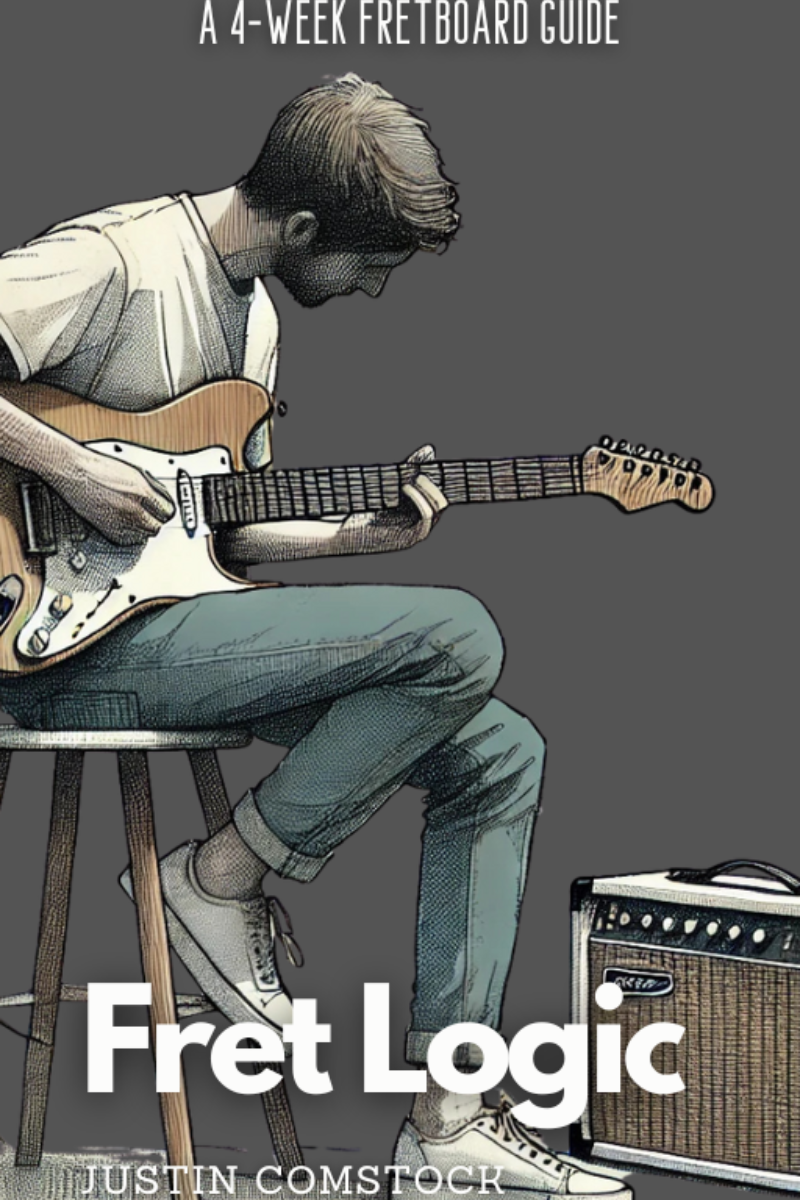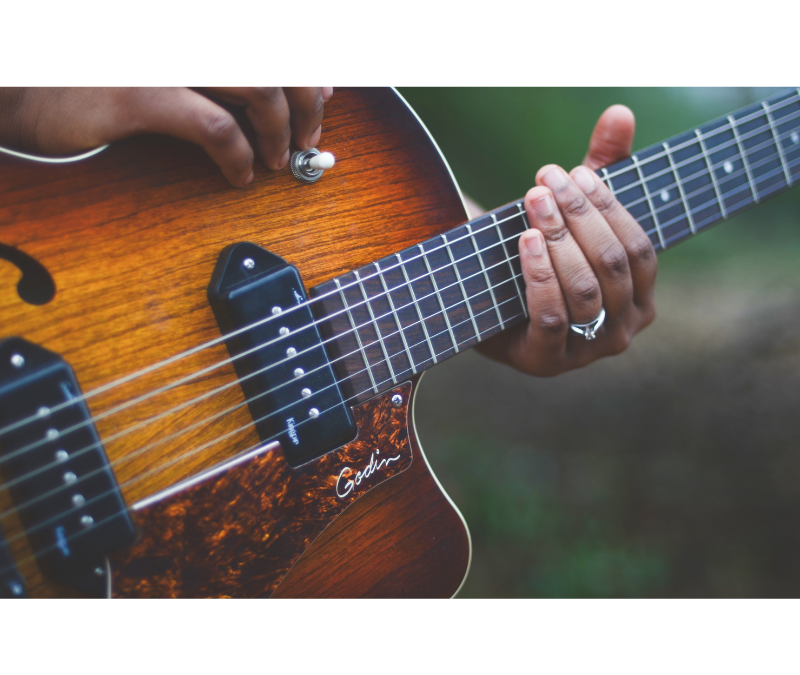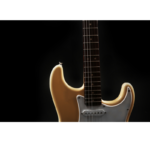Why Guitar Triads Change Everything
Most players live inside big rectangle chords. Useful, sure—but the mix gets muddy and transitions feel clunky. Guitar triads—three focused notes (root, major third, perfect fifth)—give you clarity, movement, and control. They sit where the vocal needs space, voice-lead effortlessly, and make your solos sound glued to the harmony.
If you’ve felt stuck in boxy shapes, this is your exit ramp.

❌ Stop Guessing. Start Shredding.
If you’re still fumbling through scale patterns and box shapes… it’s costing you progress.
FretDeck™ is the no-fluff system that shows you exactly how to master the fretboard—fast. Early access.
⚡️ This isn’t for dabblers. It’s for players who want results.
👉 Click here to join the pre-launch now
Early access. Limited rewards. Don’t wait.
Inside Guitar Triads: What a Major Chord Really Is
A major chord is not a shape; it’s three jobs done well:
- Root – names the chord and grounds the ear
- Major third – supplies the brightness
- Perfect fifth – stabilizes the stack
Reorder those three and you get inversions: tiny, mobile grips that travel the neck and keep your parts tight.
The Three Guitar Triad Inversions You’ll Use Daily
- Root position (R–3–5): C–E–G
- 1st inversion (3–5–R): E–G–C
- 2nd inversion (5–R–3): G–C–E
Think in string sets so you can place your part exactly where the song needs it.
String-Set Shapes for Guitar Triads (Key of C)
Guitar Triads on String Set 1 (strings 1–2–3)
Root (C–E–G): 3–5–5
1st Inversion: 8–8–9
2nd Inversion: 12–13–12
Guitar Triads on String Set 2 (strings 2–3–4)
Root (C–E–G): 10–9–8
1st Inversion: 14–12–13
2nd Inversion: 5–5–5
Memorize shapes, then name the notes out loud. That’s how the map sticks.
7 Ways to Use Guitar Triads Like a Pro
- Tidy dense progressions
Trade barre chords for upper-string triads. You’ll cut mud, keep punch. - Build solos that land
Aim chord tones (C/E/G over C) on strong beats, then connect with short runs. - Move by inversion, not leap
Root → 1st → 2nd inversion adds motion while the harmony stays put. - Arpeggiate for lyricism
Pick through the triad. Strumming becomes melody. Space appears. - Add open-string chime
Blend a fretted triad with a sympathetic open string for shimmer. - Harmonize a top line
Keep the melody on string 1; tuck a triad beneath on strings 2–3. - Pop the chorus up an octave
Same shapes, 12 frets higher. Instant lift without rewriting the part.
10-Minute Guitar Triads Workout
0–3 min: Map
In one key, cycle Root → 1st → 2nd inversion on string set 1, then set 2. Name the notes.
3–7 min: Voice-lead a progression
I–V–vi–IV in C. Move only to the nearest inversion each time—no jumps over two frets.
7–10 min: Chord-tone etude
Over a C drone, play eighth-note arpeggios, adding one tasteful passing tone between chord tones.
Repeat tomorrow. Record yourself. You’ll hear the difference inside a week.
Common Guitar Triads Mistakes (And Quick Fixes)
- Shape memorizer, note forgetter → Say “C–E–G” as you play.
- Leaping around the neck → Always choose the closest inversion.
- Over-strumming → Two or three strings, lighter touch, more tone.
Classic Recordings Powered by Triads
- “Every Breath You Take” — arpeggiated triads define the atmosphere.
- “Let It Be” — simple shapes, elegant movement.
- “Sweet Home Alabama” — hooks distilled from triad DNA.
Study the guitar part, not just the chord symbols.
CTA: ❌ Stop Guessing. Start Shredding.
Still stuck in box patterns? That confusion is expensive.
FretDeck™ is my no-fluff visual system to master the fretboard fast. Sixty illustrated cards train your eye to spot guitar triads, pentatonic connectors, and target tones in every key. If you’re serious, jump in. This isn’t for dabblers—it’s for players who want results.
Join the FretDeck™ and hop into the Guitar Freaks Hangout for weekly triad prompts, feedback, and my Fret Logic ebook free to members.

Join Guitar Freaks Hangout on Discord! 🎸
Get Fret Logic FREE!
Join the Guitar Freaks Hangout Discord and get exclusive access to my entire e-book, Fret Logic! Master the fretboard and elevate your solos with this comprehensive guide.
👉 Don’t miss out—join now and download your free copy!
Guitar Triads FAQ
What are guitar triads?
Three-note chord shapes—root, third, fifth—that outline harmony clearly and travel anywhere on the neck.
Which string sets first?
Start with 1–2–3 and 2–3–4; they sit well in a mix.
How do I practice inversions?
Pick a key, cycle Root → 1st → 2nd up and down using the nearest shape every time.
Do triads help solos?
Yes—target triad tones on downbeats, connect with short melodic runs.
Next Steps (Do These Today)
- Learn one major guitar triad across all three inversions on string set 1.
- Voice-lead a I–V–vi–IV using only nearest inversions.
- Join the pre-launch and community to keep the habit alive.
Links
- Internal: Guitar Fretboard Notes Diagram
- Berklee Online — Guitar Chords 101: Triad Inversions Up the Fretboard
About the Author
Justin Comstock is a guitarist, educator, and creator of FretDeck™, a visual system for mastering the fretboard. He runs the Guitar Freaks Hangout Discord, where players trade licks, triad workouts, and practice routines.










